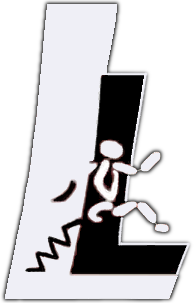Runbot - FoxRobot
Since centuries biological locomotion is a technically unrivaled archetype for many kinds of machines. Still today the biomechanics and control of human and animal legged locomotion is far from being well understood.
The research focuses on translating mechanisms found in biomechanical experiments and computer models into technical models to challenge theories on robustness, stability and control of locomotion in nature. As technical models existing robots, i.e. JenaWalker series and RunBot, are used as well as new systems are developed.
In future, the developed mechanisms will be integrated in robots and biomedical devices, such as orthoses and prostheses, to validate mechanisms experimentally and to push beyond the state-of-the-art of current mobility supporting systems.
30.05.2011 Computer model gait comparison
An extensive scan of the current version of the robot's computer model regarding the hip parameters anterior extreme angle (AEA), posterior extreme angle (PEA) and hip extension voltage has been done using the university's compute server Meggy. A number of parameter sets lead to successful walking, but gaits differ substantially.
16.05.2011 Data comparison
An extensive scan of the current version of the robot's computer model regarding the hip parameters anterior extreme angle (AEA), posterior extreme angle (PEA) and hip extension voltage has been done using the university's compute server Meggy. A number of parameter sets lead to successful walking, but gaits differ substantially.
07.04.2011 Experiment
The pilot experiment unveiled that the choosen way to acquire data leads to not entirely reliable data. I changed the setup and in cooperation with Moritz Maus an experiment was conducted. The robot walked on a circular even track and 8 infrared cameras captured markers on the robot. Thus kinematic data over more than 1 minute and about 130 steps with much higher precision could be recorded.
08.02.2011 Pilot
In a pilot project kinematic data of a biped robot were acquired using a high-speed camera (600fps) and tracking LEDs.
Publications
- Daniel Renjewski; An engineering contribution to human gait biomechanis. Dissertation (2012)
- Daniel Renjewski, André Seyfarth; Robots in human biomechanics - a study on ankle push off in walking; Biomimetics & Bioinspiration 7 036005 (2012)
- Susanne Lipfert, Michael Günther, Daniel Renjewski, Sten Grimmer, André Seyfarth; A model-experiment comparison of system dynamics for human walking and running; The Journal of Theoretical Biology 292, pp.11-17 (2011)
- Frank Peuker, Daniel Renjewski, Martin Groß, Sten Grimmer and Andre Seyfarth, Bio- and robotic-inspired simulation of limb loss in quadrupeds, Dynamic Walking 2011, Jena
- Renjewski D., Seyfarth A. How come a moving biped does not fall - the challenge to apply theoretical stability concepts, US National Congress of Theoretical and Applied Mechanics, June 27- July 02, State College, USA, 2010.
- Renjewski D., Seyfarth A., Manoonpong P., Wörgötter F. The development of a biomechanical leg system and its neural control, 2009 IEEE International Conference on Robotics and Biomimetics, Dec 18-22, Guilin, China, 2009.
- Poster presentation Dynamic Walking 2008 (1.57 MB)
- Renjewski D., Seyfarth A., Manoonpong P., Wörgötter F. From Biomechanical Concepts Towards Fast And Robust Robots, Advances in Mobile Robotics: Proc. of 11th CLAWAR, Marques L, Almeida A, Tokhi MO, Virk GS (Eds.), World Scientific: 630-637, 2008




